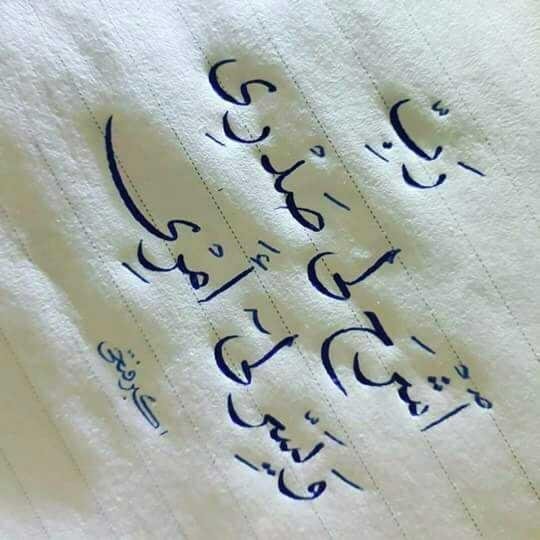The function of Islamic Calligraph
The function of Islamic Calligraphy is in principle divided into two parts, namely as a medium of communication and media of expression.
Media Communications
As a medium of communication, writing is used as a tool to convey messages, from one person to another from the communicant to the receiver (receiver). Through writing, people can pour ideas and thoughts. With writing, we can know the character of a person, for example: angry, patient, tenacious, or a diligent person.
Small, orderly and subtle writing identifies the tenacity and precision of the author. Large and irregular writing can be interpreted as a haste. In connection with that Muhammad Thahir Ibn Abdal Kadir al Kurdi states that, writing can describe a person's posture, for example writing with a short arrangement and meeting tend to be written by people berpostur short body. Similarly, tall people tend to write rarely and also high. Even a sensitive person who sees a piece of writing can distinguish between male and female writings, the writings of lek molek women from equivalent man writings. But in reality not many women are calligraphers, women usually can not stand the difficulty, unlike men who are usually more resilient, diligent, and patient.
Posts can also be used as tracking data as well as hand, which can inform who the author is. As with fingerprints, no two people have the exact same text, even if they are twins.
As a medium of communication, aksarindah Islam required clarity of writing, letter by letter, in order to be read clearly as intended by the author.
Media Expression
Aksarindah Islam can also be used as a medium of expression. This is evidenced by some of Indonesia's top painters such as Ahmad Sadali, A. D. Pirous, Amri Yahya, Amang Rahman, HD. Sirojuddin AR, Abay D. Sabarna, Saiful Adnan, Abas Alibasyah, Fadjar Sidik, and others, including Indonesian painting maestro Affandi had also made Islamic calligraphy. Although it is a lafadz "Allah" placed on the top of his canvas plane combined with Affandi's distinctive portrait painting.
As with any other expression medium, the aksarindah that is etched on the canvas plane does not stop with the text alone. More than that get additional elements of fine arts in general, such as elements of color, texture and lines. The arrangement of composition, rhythm, and dark light. Unity or unity both between the unity of art elements, as well as the unity of the theme, also received attention in the works of aksarindah Islamic art.
Accordingly, according to A.D. Pirous in the book by Ilham Khoiri R., "Al-Quran and Arabic Calligraphy", states that when calligraphy is written with an additional emotion that exceeds its proportion as a means of communication, it will have an added process. Calligraphy can be a work that harbor a deep aesthetic. As a work of art the form of calligraphy will continue to grow and never finish.
As a devout Muslim there is a certain kind of preoccupation that is felt when incriminating Kalam Ilahi or Sunnatan the Prophet in the work. More solemn again if it has reached the value of worship transcendental. Every work that is intended as a worship to make the heart become calm serene and certainly believed to be rewarded. The impact is to be reflected in every work produced. However, any artwork (including works of Aksarindah Islam) is a deep expression or expression of feeling from the painter or his cylinder.
The works of aksarindah Islam have started to bloom in the homeland, and has been loved by Muslim artists in the last decade. And began to be counted as a work of contemporary art often exhibited both in joint exhibitions, as well as singles. In the National Forum participated in the National MTQ or on the occasions of Islamic Days, at the level of Asean is always held confection Writing Khat in Brunei Darussalam and international competitions held in Turkey. At various levels that Indonesia aksarinder often dominate the minimal championship until the Asean level championship.
